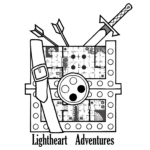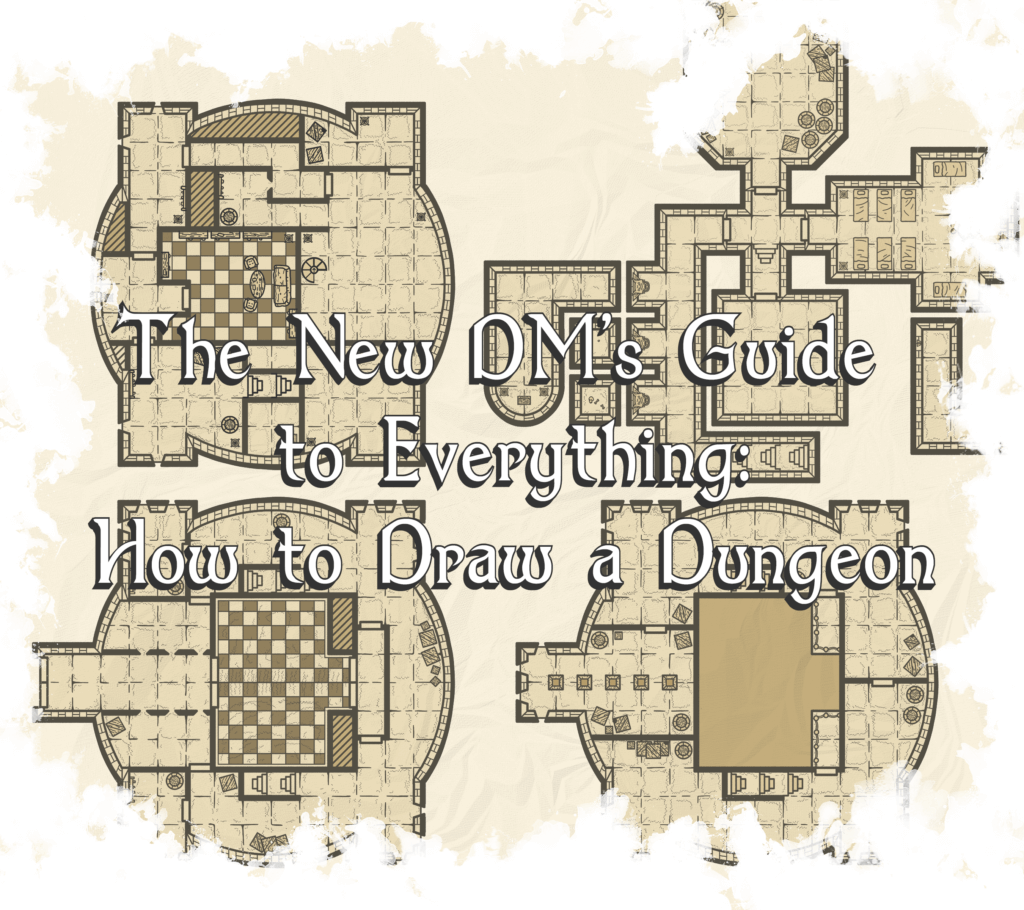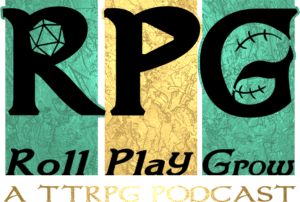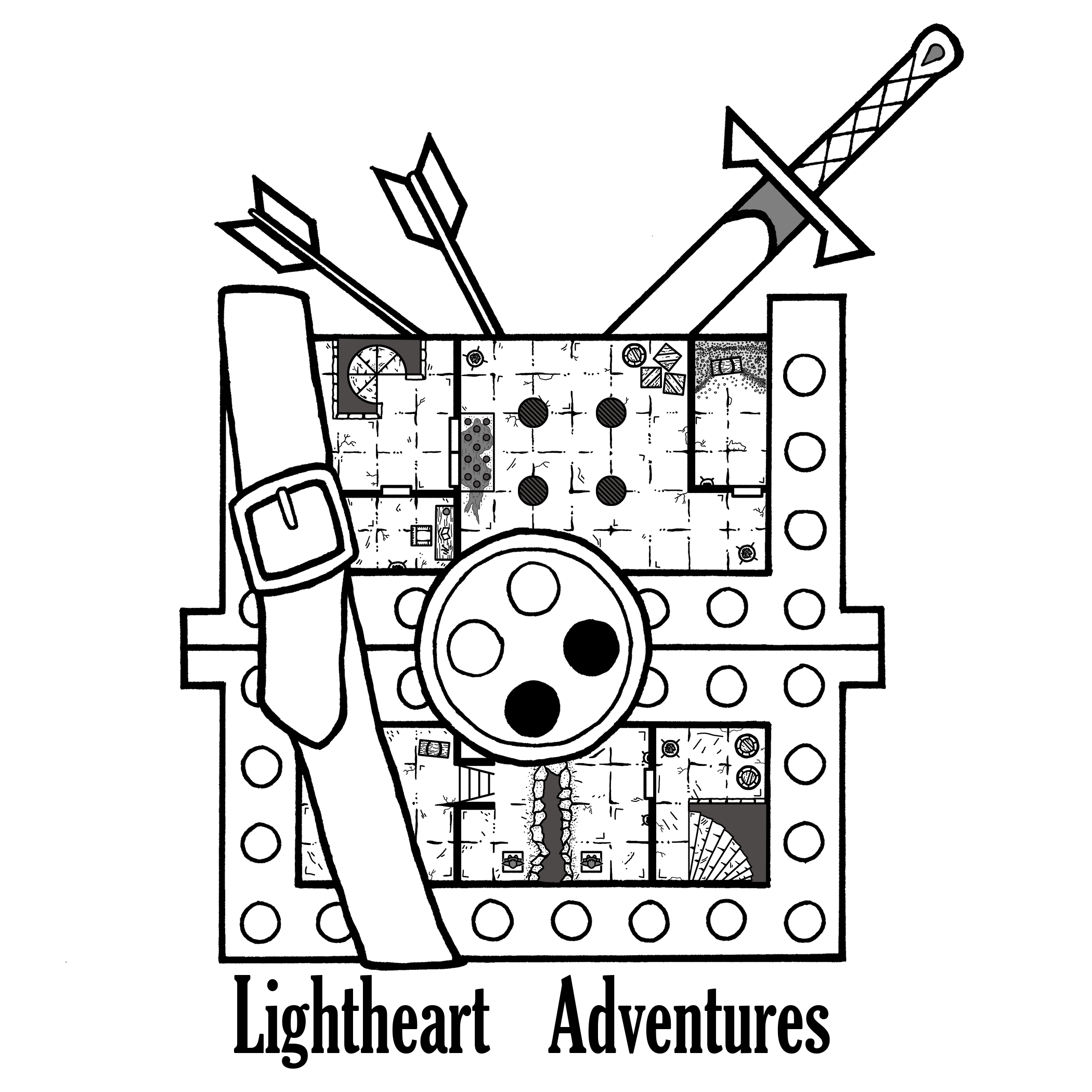Welcome back to our New DM’s Guide to Everything series! This week we’re talking about how to draw a dungeon using the topics we discussed last time. There’s going to be quite a few ugly sketches to see before we get to the finished not-so-ugly piece, so let’s hop on in!
Be sure to check out our other DM’s Guide to Everything posts:
- Getting Started
- How to Create a Safe Environment for your TTRPG Players
- Worldbuilding for TTRPGs
- Worldbuilding Part 2: Encounter ideas for your TTRPG map
- How to Design TTRPG Encounters
- How to Design a Dungeon
Disclaimer: This post contains affiliate links, meaning we may receive a small commission from qualifying purchases if you click on our links, at no additional cost to you. As Amazon affiliates, we may earn from qualifying purchases. You can see our full disclosure here. Thanks for supporting your favorite dungeon artists!
How to draw a dungeon: first steps
Reference
My first step towards drawing out a dungeon is gathering reference images. If I’m drawing a specific type of dungeon based on historical architecture, such as a keep, I’ll spend a little time looking at real-world references. Granted, there’ll be times when no reference image exists for outlandish ideas, but even then finding art to inspire your work is highly encouraged.
I found this neat-looking keep in Essonne, France depicting a circular design that I want to replicate for my warlock:
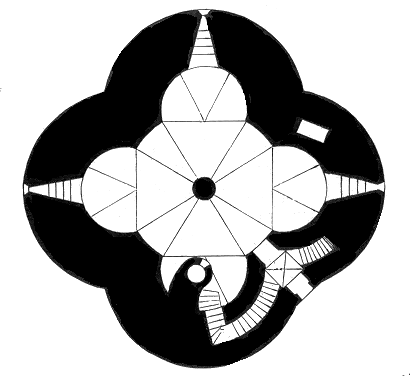
Sketching
Next, I’ll do a series of rough sketches which lets me rearrange rooms to make an interesting dungeon without committing ink to paper. I tend to sketch out lines and rooms quickly since details aren’t important at this moment. A first pass might look like this:

This helps me solidify space ideas, like “where does the boss monster stay” or “what kind of rooms exist in this tower?” Since this is the ground floor for the keep, the entrance is heavily defended with arrow slots and a secondary door to slow intruders. Of course, the defenses might not be as well-manned if the adventurers sneak in.
Since I’m doing this work in Photoshop with an art tablet, I have the benefit of copying and pasting parts that I need for new sketches. The keep is going to be three floors with a dungeon basement and attic area, so I can use the main outline a few times. This also helps to keep staircases and other objects that span multiple levels aligned so they make sense upon inspection.
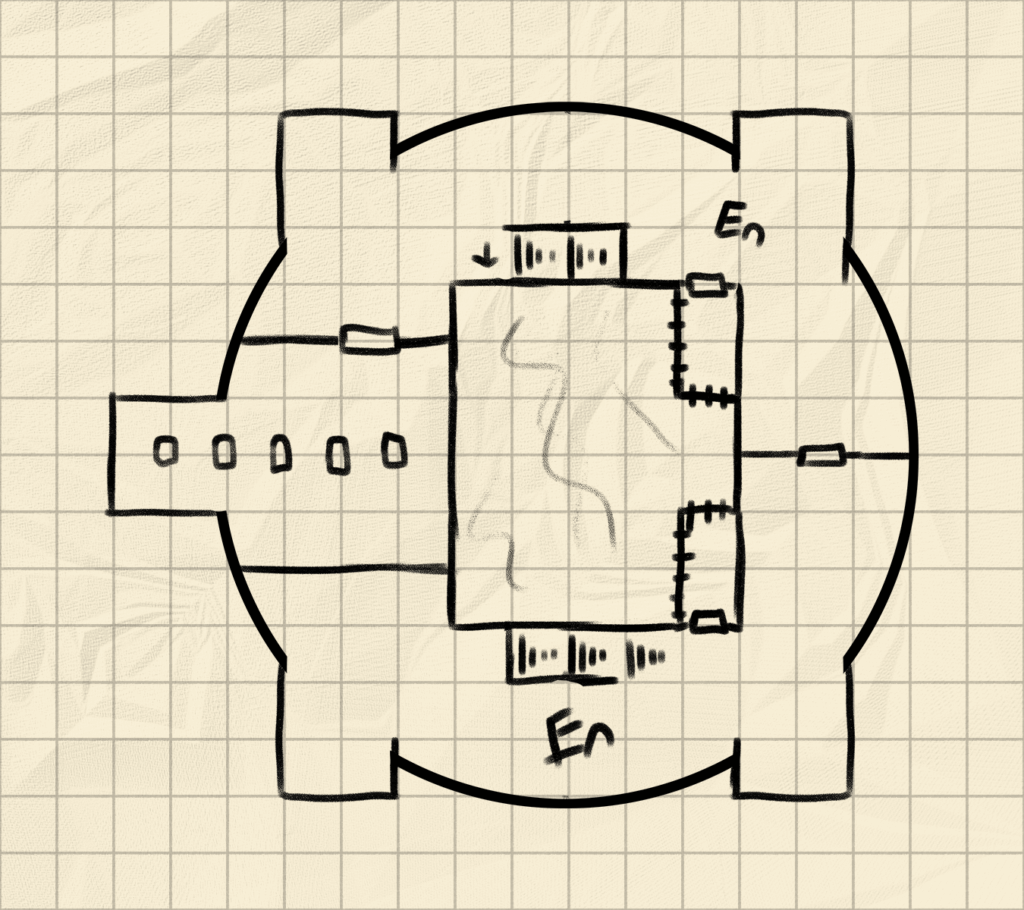
I like to have spaces in maps that are multi-level, so on the second floor I plan on placing balconies that overlook the main courtyard. Perhaps it’s a spot where the warlock can gloat before springing a trap, or minions can fire crossbows at a distance.
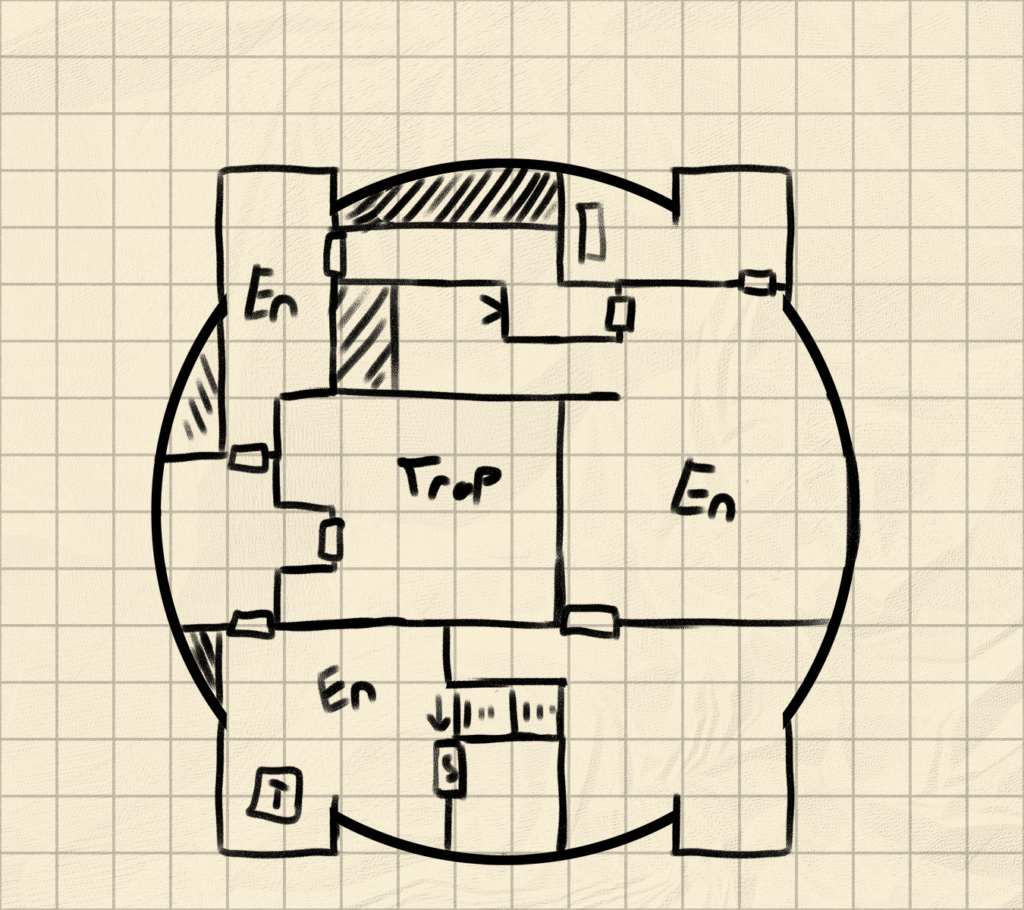
The first two floors will be low-intensity exploration and light combat, while the 3rd floor is where things get interesting. This floor is meant to be more in line with traditional dungeons, with secret rooms and unusual layouts.
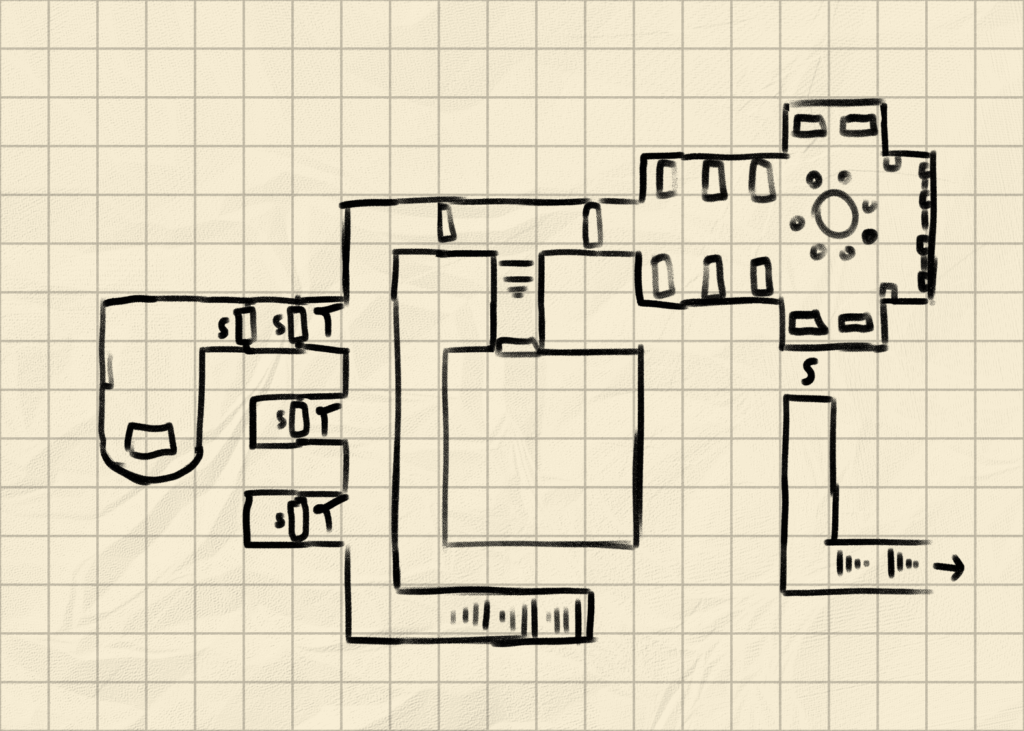
Lastly, for the dungeon basement I felt it was a good idea to include a secret entrance that leads into the main minion sleep area. Stealthy adventurers could sneak past the sleeping minions (if any) and work their way up from the dungeon. I find it to be a good practice to include multiple ways for the adventurers to conquer your dungeon.
How to draw a dungeon: Details
Traps and encounters
Once I’ve got my sketches down, I think critically about what kind of encounters and traps could go in each room. Since this keep is home to the warlock and their minions, the minions likely roam around. Traps normally wouldn’t be in heavy traffic areas–or at least not where someone could accidentally set one off. Minions run most of the traps on the first two floors including arrow slits or trap doors above the entrance. However, the dungeon level and third floor are home to the more dangerous or disguised hazards designed to ensnare unwary adventurers.
As I mentioned last week, I’m planning on creating this map to be challenging for four level 7 adventurers. Based on our calculations, there should be a handful of encounters seeded throughout the keep:
- 3 easy encounters
- 1 medium encounter
- 1 hard encounter
- 1 deadly encounter
Since we’ve got a rough map sketched out, we can add some fights to our rooms. The first two floors will mostly use cultists as encounters to create a sense of overwhelming numbers as more minions react to the party’s presence. That deadly encounter should be reserved for the fight with the warlock, as is befitting a boss monster. Another idea is that the trap room on the third floor holds a well-appointed sitting room. Wise adventurers would be especially wary since three mimics hide among the furniture (easy encounter). I feel that combat encounters depend on the adventurers’ actions, so I’ll create a small roster of monsters to add to rooms as necessary. For example, the list might look like this:
- 20+ cultists
- 5 cult fanatics
- 5 imps
- 1 chain devil
This way I can add minions on the fly, and if the adventurers make more noise than anticipated, more minions can jump in to make things harder.
As a quick aside, I’ve learned over the years that a group of adventurers can easily wipe out individual monsters with CR’s average to the party. That chain devil is CR 8 and is a medium encounter against our party of four. A devil could do serious damage to the adventurers in a straight fight, but clever players can use their environment and numbers to their advantage. I encourage careful placement to ensure that a monster isn’t “one-shotted” before it can be a threat.
Secret rooms
I love adding secret rooms to maps. There — that’s the entire section.
But in all seriousness, I prefer to utilize secret areas as optional rewards for players rather than necessary for progression. There’s a very real possibility that hiding a secret door behind a high Investigation or Perception check means some groups never find the area. Instead, I’ll leave context clues that encourage active exploration to find secrets. There’s a hidden door on the third floor that the adventurers could learn about if they interrogate a cultist, or eavesdrop on a conversation. They might not know exactly where it’s at or how to open it, but it will give the adventurers a reason to explore further.
On the other hand, I do like to challenge the expectations of players. In the dungeon area I’ve added three secret doors along a narrow hallway. I intend to add a context puzzle and trap combination that entices players to poke around to unravel the mystery. If they avoid the trap and open the doors to the lower two rooms, they’ll find an empty chamber. However, a reward awaits if they persist (or get lucky) and open the third door. There’s nothing like a lingering mystery to pick at players’ resolve.
Redraw
With these new revisions in mind, I’ll go back over my sketches and add in details and new rooms. The upper floors didn’t change much from the original sketches, but the dungeon has a new room to make a full intersection hallway. I also decided that the warlock needed their own space in the attic filled with arcane trappings.
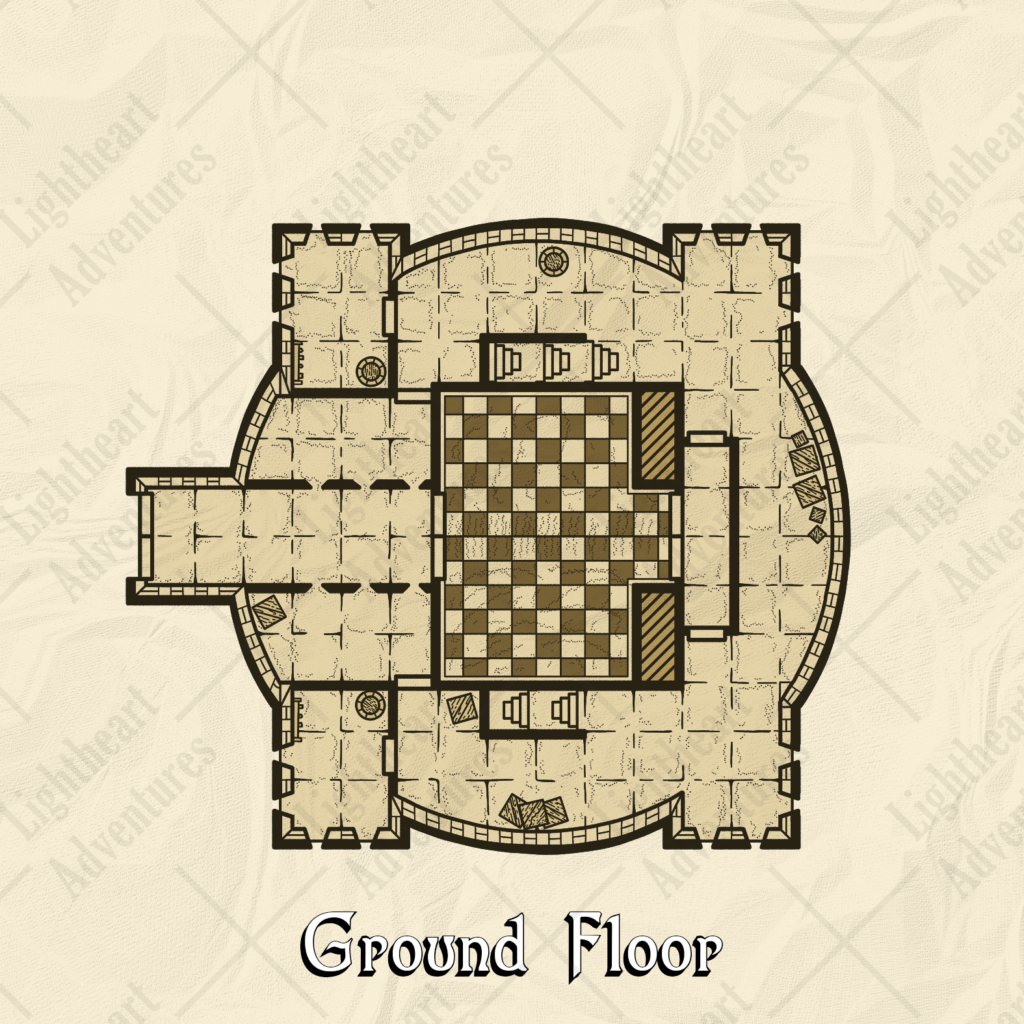
Once I’m satisfied with the layout, I add objects and obstacles to the rooms. Since this keep is mostly used for war purposes, there are several crates and utility items strewn about. Something else to consider is the atmosphere for each floor or room. If a room is predominantly occupied by an evil influence, what kind of impression does the room give upon entry?
I plan on discussing adding atmosphere to dungeons in a future post, so be on the lookout!
Wrap up
Our warlock keep looks ready to thwart any oncoming adventurers! Thinking about how to draw a dungeon is arguably my favorite part of the whole creation process. There’s nothing like setting out a map for your players to puzzle over or fret about when placing large miniatures.
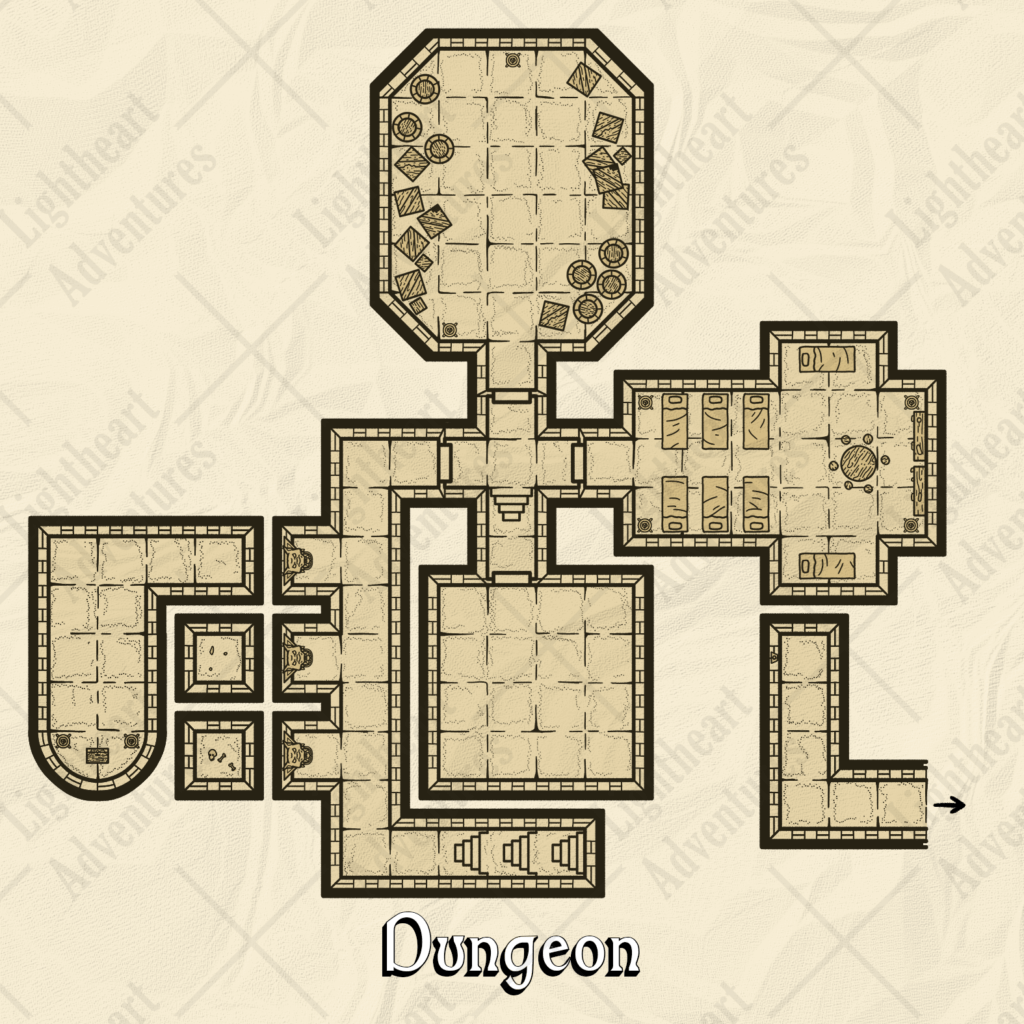
Thanks for dropping by! We would love to know how your first gaming session goes, so please drop a comment here on the blog, on Twitter, Facebook, Instagram, or Discord to let us know how it went! If you’d like access to more maps and content, including downloadable PDFs of our adventures, check out our Patreon. We’re able to do what we do because of all our amazing Patrons!
